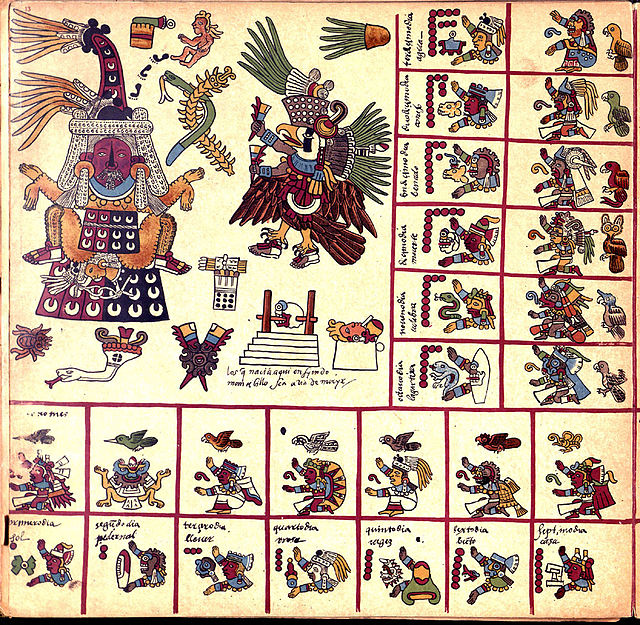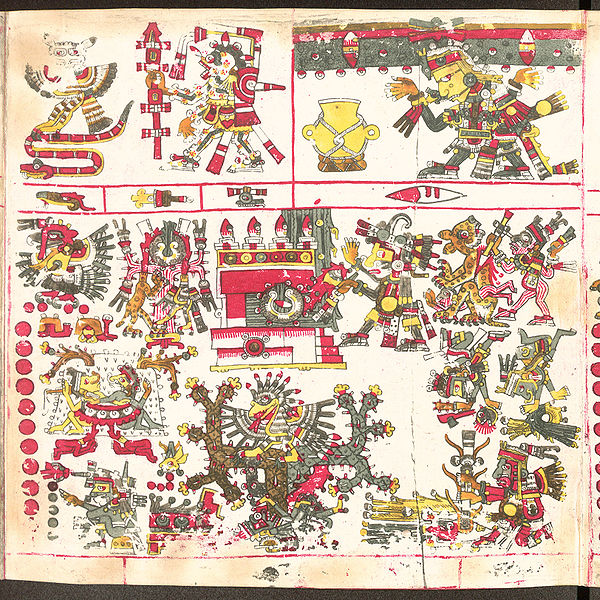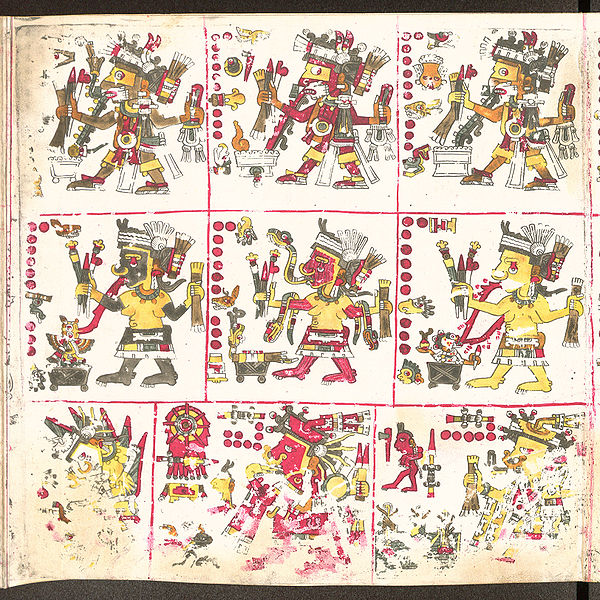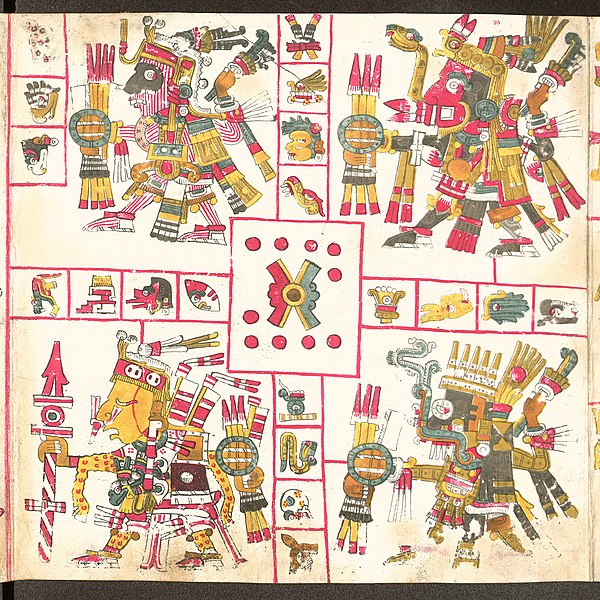In Aztec mythology, Tlahzōlteōtl is a deity of sexuality, vice, purification, steam baths, lust, filth, and a patroness of adulterers. She is known by three names, Tlahēlcuāni and Tlazōlmiquiztli, and Ixcuina or Ixcuinan, the latter of which refers to a quadripartite association of four sister deities.
Tlahzōlteōtl as depicted in the Codex Borgia
From the Codex Borbonicus, this shows the 13th trecena of the Aztec sacred calendar (tonalpohualli). The deity Tlazolteotl, is wearing a flayed human skin and giving birth to Cinteotl. The 13 day-signs of this trecena, starting with 1 Earthquake, begin at the bottom left and wrap around.
The moons represent the cyclical nature of sin and purification, and the animal motifs serve to ground the deity in the earth and indicate fertility.
Another drawing from the Codex Borgia
Aztec mythology is the body or collection of myths of the Aztec civilization of Central Mexico. The Aztecs were Nahuatl-speaking groups living in central Mexico and much of their mythology is similar to that of other Mesoamerican cultures. According to legend, the various groups who were to become the Aztecs arrived from the north into the Anahuac valley around Lake Texcoco. The location of this valley and lake of destination is clear – it is the heart of modern Mexico City – but little can be known with certainty about the origin of the Aztec. There are different accounts of their origin. In the myth the ancestors of the Mexica/Aztec came from a place in the north called Aztlan, the last of seven nahuatlacas to make the journey southward, hence their name "Azteca." Other accounts cite their origin in Chicomoztoc, "the place of the seven caves", or at Tamoanchan.

Mictlantecuhtli (left), god of death, the lord of the Underworld and Quetzalcoatl (right), god of wisdom, life, knowledge, morning star, patron of the winds and light, the lord of the West. Together they symbolize life and death.
Huitzilopochtli is raising up the skies of the South, one of the four directions of the world, surrounded by their respective trees, temples, patterns, and divination symbols.
Embodied spirits; Tonalleque (1), Cihuateteo (2).
Patterns of War; (1a) Tlaloc, (1b) Xiuhtecuhtli, (2a) Mixcoatl, (2b) Xipe-Totec.








